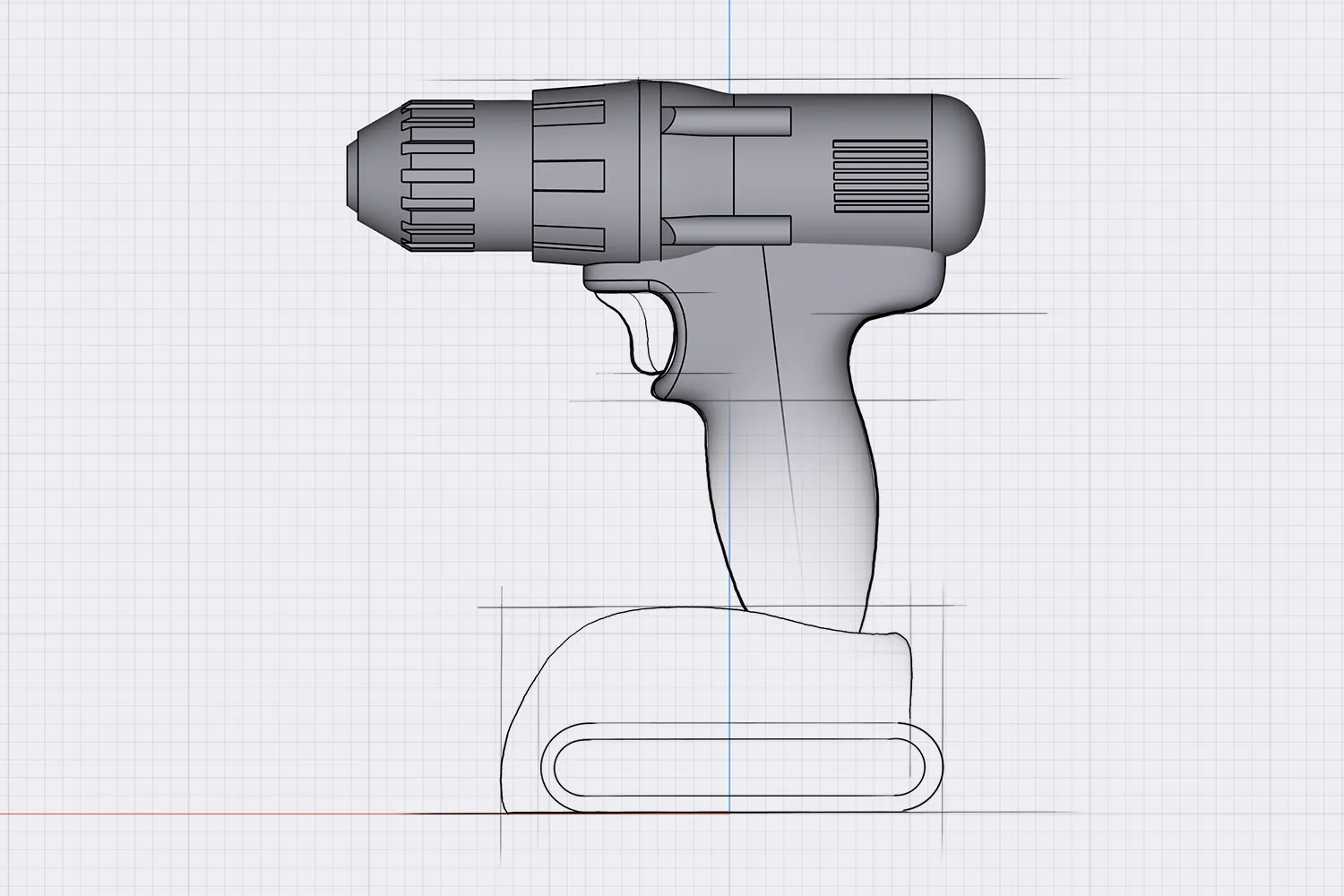
DXF (Data Exchange Format or Drawing Interchange Format) is created by Autodesk as a tagged data representation of the AutoCAD-native drawing file, DWG. The DXF format is completely open-source: it allows for cross-platform compatibility and keeps almost all data as a drawing file. Since you can view and edit DXF files in most CAD (computer-aided design) tools, DXF quickly became the go-to file format for sharing modeling data with third-party software. Depending on the origin file format, DXF can contain 2D or 3D information. For example, when converted from a DWG drawing, it will only have the 2D model information, but in the case of converting an STL file to DXF, it will keep the 3D data as well. Keep in mind, however, that DXF is ultimately a drafting file format. For 3D geometries, you’ll want to use STEP files.
The DXF file format is mainly used for exchanging drafting and modeling data across the CAD industry. The open-source nature of DXF unlocks closer collaboration between engineers, designers, drafters, and manufacturers. Being able to export and import files across their various programs helps them work together on the same design without miscommunication.
DXF is also known for its pinpoint accuracy. Thanks to the vector format, these files can be scaled up and down as needed without losing valuable design details. DXF files keep their accuracy up to 16-bit floating point, which makes them ideal for documentation and machining. Alternatively, using the DXF format, you can export the full documentation of your design instead of just the sketch. When importing your model to Shapr3D, you’ll need to convert it to STL format if you want to keep all 3D modeling data.
DXF is also ideal for machining. Keep in mind, however, that not every machining software can work with all geometry elements: splines may need to be replaced by arcs. Make sure to double-check the tools you’re using to create your sketches.
Open a new project or an existing one. Tap “Import”, select “Files”, and browse your iPad to find your DXF file. Select and open your DXF file.
Open a new project or an existing one. Click “File”, select “Import”, and browse your Mac to find your DXF file. Select and open your DXF file.
Open a new project or an existing one. Tap or click on the three dots in the upper right and select “Import”. Select your file and import it to your workspace. Open your DXF file.
Pro tip: At Shapr3D, we are focusing on creating the perfect 3D models, which require clean and accurate sketches used for creating 3D bodies. The DXF format supports some modeling elements that may be well-known in drafting tools, but they may create details that could make your workspace cluttered.
When importing your files, bear in mind that texts, annotations, hatches, and fills will be skipped, while layers will be merged into a single sketch plane. To counter this, you can export unsupported elements as outlines or contours.
After finishing your sketches, open the “Export” menu and look for the “Sketch Export” option. That will let you export all the sketches in the modeling space as a single file. If you’re planning to work with these exported elements in a program that “thinks” in 2D, make sure to align the exported sketches parallel to the X-Y plane. Importing a sketch from a different plane may cause dimension distortions.
You can export technical drawings as DXF, too. Prepare your 3D model in the modeling space, then go to “Export – Drawing” or “Add – Drawing”. Here you can add markups and dimensions, which will then be exported as proper documentation.
New to Shapr3D? Get familiar with the app, import and edit your DXF files on multiple platforms, and prepare your models for documentation or machining. You can use Shapr3D on your iPad, Mac, or Windows device.